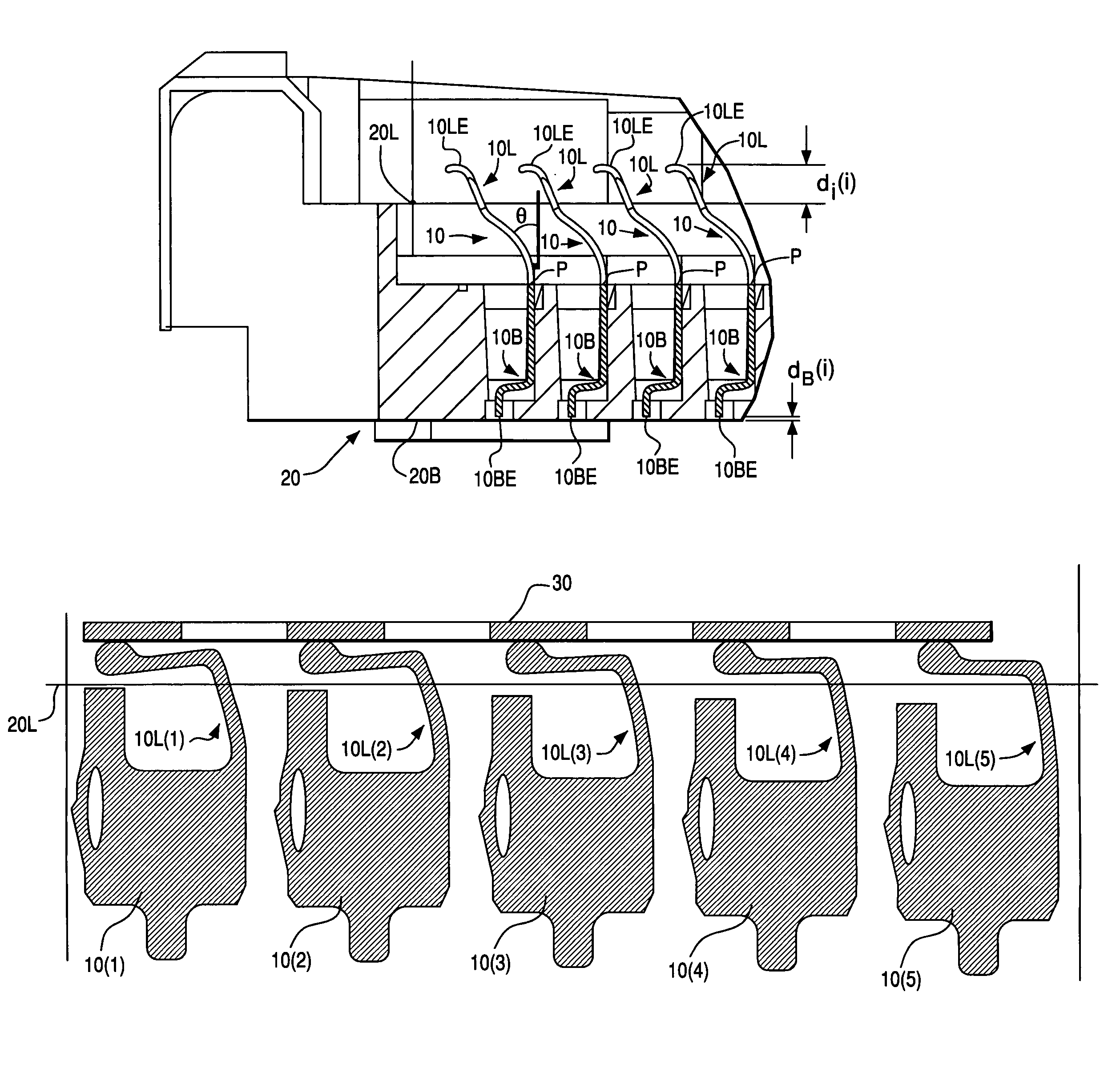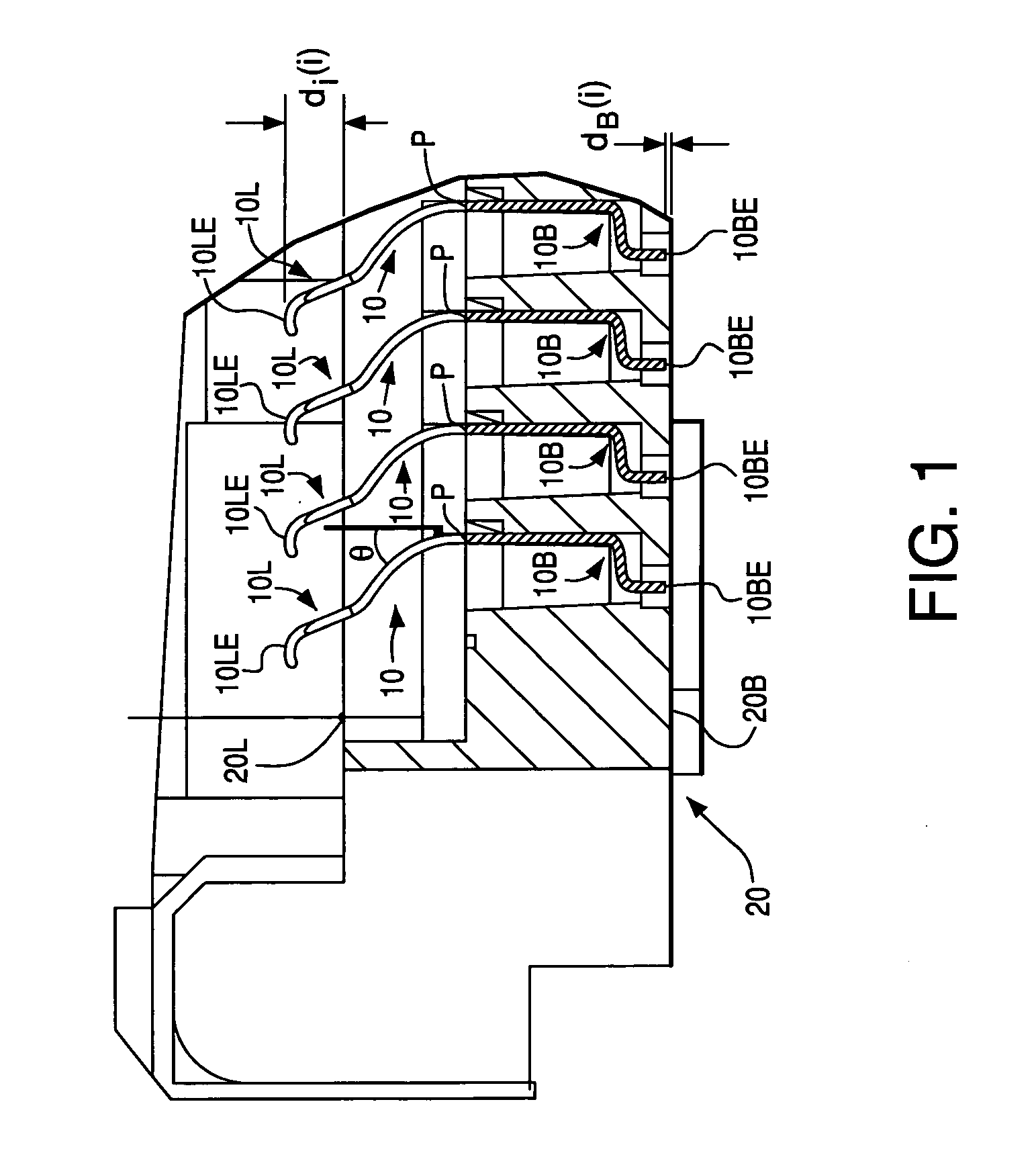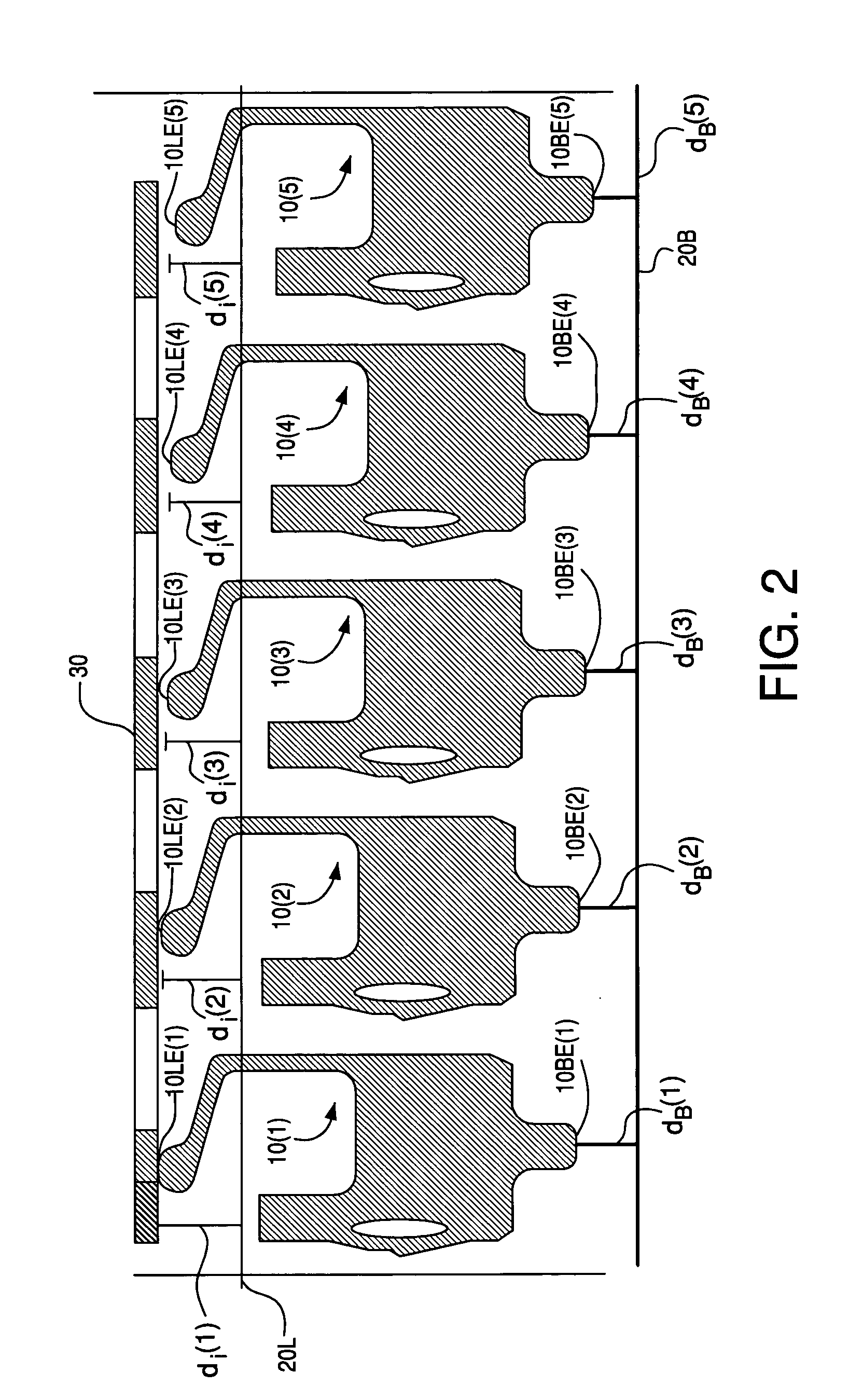Methods for controlling contact height
a technology of contact height and height, applied in the direction of fixed connections, electrical apparatus construction details, deformation of connections, etc., can solve the problems of high cost, complicated approach, and associated added costs, and achieve the effect of reducing the variation of contact heigh
- Summary
- Abstract
- Description
- Claims
- Application Information
AI Technical Summary
Benefits of technology
Problems solved by technology
Method used
Image
Examples
Embodiment Construction
[0019]A method according to the invention for setting contact height in an electrical connector may include seating each of a plurality of electrical contacts in a connector housing such that each electrical contact has a respective initial contact height relative to an interface side of the connector housing, and pressing on at least one of the contacts such that, after the pressing, each of the contacts has approximately the same contact height relative to the interface side of the connector housing.
[0020]As shown in FIG. 1, a plurality of electrical contacts 10 may be seated in a connector housing 20. The contacts 10 depicted in FIG. 1 are LGA-BGA contacts. That is, a first portion 10B of each contact 10 is adapted for use as a BGA connector contact and a second portion 10L, which is opposite the first portion 10B, is adapted for use as an LGA connector contact. Though the contacts 10 depicted in FIG. 1 are LGA-BGA contacts, it should be understood that the methods of the inventi...
PUM
| Property | Measurement | Unit |
|---|---|---|
| distance | aaaaa | aaaaa |
| distance | aaaaa | aaaaa |
| height di | aaaaa | aaaaa |
Abstract
Description
Claims
Application Information
 Login to View More
Login to View More - R&D
- Intellectual Property
- Life Sciences
- Materials
- Tech Scout
- Unparalleled Data Quality
- Higher Quality Content
- 60% Fewer Hallucinations
Browse by: Latest US Patents, China's latest patents, Technical Efficacy Thesaurus, Application Domain, Technology Topic, Popular Technical Reports.
© 2025 PatSnap. All rights reserved.Legal|Privacy policy|Modern Slavery Act Transparency Statement|Sitemap|About US| Contact US: help@patsnap.com



